This year it’s been estimated that there is a huge rise in the number of families who are transitioning to a vegan diet.
Consuming foods that are free from animal products has soared in the last 15 years, increasing to an upward of 9.6 million people in the United States alone.
Included in the 9.6 million vegans across the states are children whose parents have chosen to feed their kids a diet excluding any animal products.
With the popular rise in parents transitioning their families to a vegan diet, there have been many questions of what is to be eaten and what needs to be left off the table.
Figuring out what type of vegan foods your little ones can eat, is going to be the top question. Of course, the rule of substituting key foods is one all vegans need to understand.
For instance, if you’re now without meat – that protein needs to be substituted with a plant-based option, but, what about the non-essential foods.
What about the delicious treats we’re all used to eating before having a vegan diet, these foods aren’t technically essential. Regardless, parents might have questions about what happens to the candy we all love after transitioning to a vegan diet?
Are most of the popular candies already vegan, are they bad for us, which ones should you avoid after choosing to be plant-based?
If you love sour patch kids, you know exactly what I mean. I loved sour patch kids so much a few years back that I ate them by the bag with my first pregnancy.
couldn’t imagine not having them, so this one is a tribute to you avid sour patch kid lovers out there.
What Does Vegan Mean?
View in gallery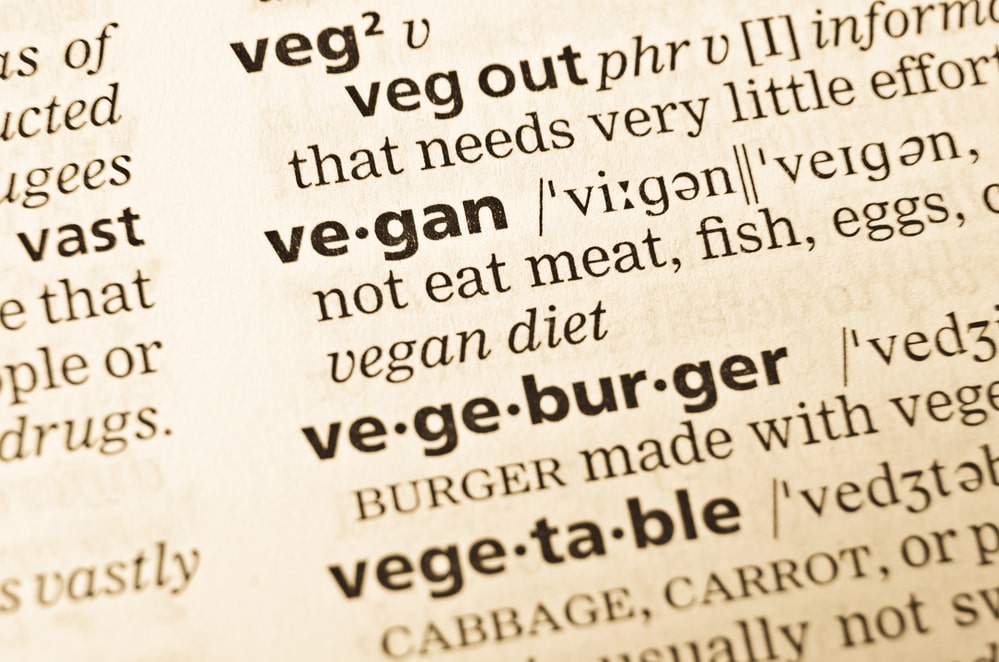
You can be vegan and have the foods that you love – being vegan simply means that you eat only foods that have been derived from plants. Basically, vegan foods cannot contain any animal product even in small amounts, to be considered fully vegan.
Vegan foods can still be your traditional favorite foods, except without the animal-derived products; meat, cheese, milk, or eggs. Vegan meals can be just as tasty, and nutritious for you as non-vegan meals.
Do candy companies make vegan candy?
Since candy production has been around much longer than the trend of growing veganism, you can’t expect your long-loved candy favorites to all be vegan.
If you shop around though, you might notice how many new and up-coming vegan candy companies there are.
In addition to the upcoming vegan candy companies like Sweet Petes Candy Co., Hunny Bon, or Vegan Essentials the most popular candy companies have caught onto all of the hype regarding vegan candies.
Big-name brands like Twizzlers or Skittles are beginning to advertise that they are indeed vegan.
There is a demand for vegan candy, so for them to keep their name among the top competitors within the candy world, they need to ensure they can give their customers the candy they are asking for.
Lucky for most of the candy companies that have been around for many years already have vegan candy by natural cause. Their candy choices already contain vegan ingredients.
This makes it easy for their company because they don’t have to make any changes to their product outside of advertising that each candy bar is vegan – so that customers know.
So when you look at the bigger picture some of the candy bars people have been eating, are already vegan. That’s right…you can go ahead and sigh in relief if your favorite candy happens to be Twizzlers, jolly ranchers, or Swedish fish.
What Are Sour Patch Kids?
If you aren’t here to read about whether one of your favorite candies(sour patch kids) are truly vegan or not – and you don’t know what they are in the first place – let’s see what this candy is together.
Sour patch kids are a favorite to many non-vegans, but it’s good to question them once you commit to a vegan diet. They are a brightly colored chewy candy that packs a huge flavor within each of the little chewy men.
Sour patch kids contain a sugary and sour flavor right when you pop it in your mouth to the moment you swallow it. It becomes sweeter as you continue to devour it as it’s meant to leave your taste buds with a sense of sweetness overall.
[amalinkspro type=”showcase” asin=”B003EMOPMK” apilink=”https://www.amazon.com/dp/B003EMOPMK?tag=mominformedcom-20&linkCode=osi&th=1&psc=1″ new-window=”true” addtocart=”false” nofollow=”true” sc-id=”4″ imgs=”LargeImage” link-imgs=”false” specs=”Twelve 3.5 oz boxes of SOUR PATCH KIDS Original Soft & Chewy Candy~~~Assorted fruit flavors offer a variety of options that are SOUR. SWEET. GONE.~~~Soft and chewy candies have the traditional SOUR PATCH KIDS shape for a hint of mischief~~~Bring this SOUR THEN SWEET candy to parties, holidays, movies and more” btn-color=”#ff9900″ btn-text=”Buy on Amazon” alignment=”aligncenter” hide-prime=”0″ hide-image=”0″ hide-price=”0″ hide-button=”0″ width=”750″]SOUR PATCH KIDS Original Soft & Chewy Candy[/amalinkspro]
Sour Patch Kids were originally created in the ’70s with the name ‘Mar’s Men’ I kinda wish they left them to have that name, to be honest.
Since the 70’s these little tasty astronauts have come a long way – today there are many flavors – you can even create your own combination of flavors and order a pack of the flavors you love the most.
In addition, you can give sour patch kids as gifts to your loved ones for any special occasion – you can even play their video game, World Gone Sour if you’d like to. Sour patch kids have long been in the candy market, and have left their mark in the industry.
You could say that the vegan sour-chewy candies are inspired by this company.
So even our vegan friends who choose not to consume sour patch, kids can give thanks to sour patch kids for inspiring new and upcoming choices of vegan candy that resemble sour patch kids.
The Real Question – Are Sour Patch Kids Vegan Or Not?
Since many other candy choices on the market today are already vegan, wouldn’t it make sense that sour patch kids are vegan too? No, not so fast! Sour patch kids aren’t totally vegan or claimed to be.
In fact, sour patch kids aren’t even vegetarian-friendly -gelatin is an animal product – not a by-product like eggs are to chicken – a full-blown animal-derived ingredient.
If you’re trying to eat purely vegan, don’t reach for the sour patch kids anymore. Gelatin isn’t the only ingredient that isn’t vegan though, there are a few others that break the vegan rule-of-thumb, let’s go over them below.
Gelatin Is An Animal Product Made From Boiling All Things Animal Parts
Well, gelatin is mostly made from boiling all of the animal parts together that would otherwise not be very useful anywhere else.
Is there another option that proves equally purposeful to gelatin in the vegan world – yes – gelatin long outstands any other gelatin from plants though?
View in gallery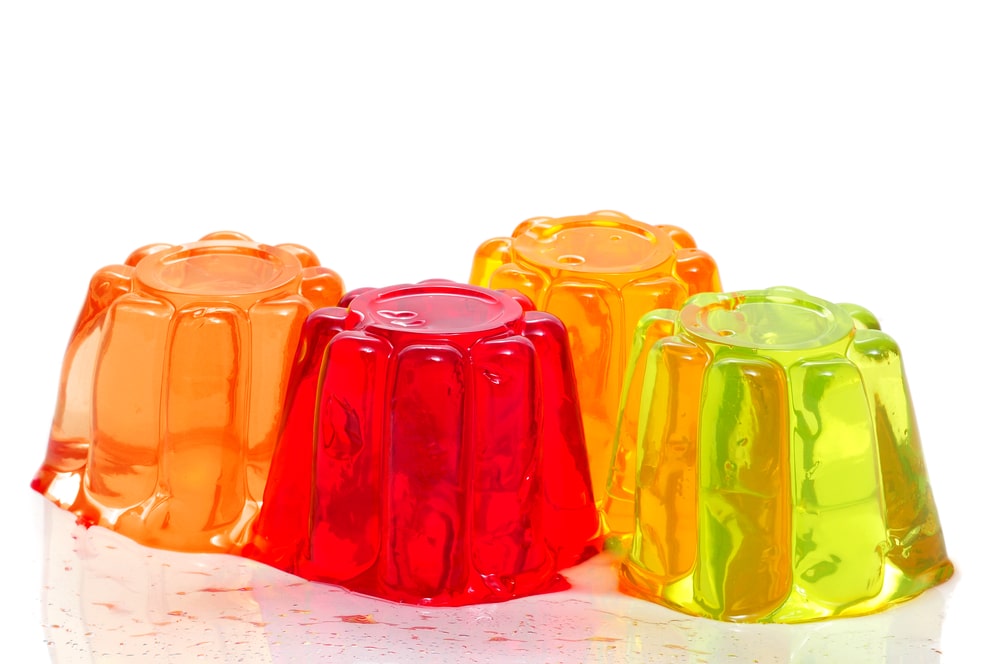
Gelatin has been used since the 15th century in, you guessed it – Jello! The ever-growing demand for vegan-based foods and candies has only brought to light how important vegan-friendly gelatin stabilizers are in candy production.
Maybe one-day sour patch kids will take a leap to be vegan friendly, but for now, they see many happy customers who aren’t vegan still love their product.
PETA recognizes sour patch kids as a vegan candy, but this is only because the ingredient gelatin isn’t listed on the package.
Natural Flavors Come From Plant Or Animals And You Just Don’t Know What You’re Getting With Sour Patch Kids
When you consume ‘natural flavors’ you won’t know where the flavors are derived from. It could be derived from a plant or from an animal source.
According to Discovermagazine.com, “Natural flavors come from when a plant or animal sources, like a fruit, vegetable, meat, fish, dairy product, herb, spice, leaf, root, bark, or bud that is then processed, fermented or distilled in some way.
In short, natural flavors are extracted from plants and animals to create specific flavors for processed foods.”
By this definition, you don’t know what type of natural flavors you’re getting in sour patch kids and it’s unfortunate that companies don’t have to specify where their natural flavors are derived from.
If each company had to specify which natural flavors they used, at least we would know which foods and candy are truly vegan or not.
It’s likely that sour patch kids don’t care whether they use animal or plant-based flavors in their chewy candies, since their gelatin is directly derived from an animal.
Sugar Is Another Thing You Have To Worry About When It Comes To Sour Patch Kids
Unfortunately, the question of veganism doesn’t stop at gelatin or natural flavors with sour patch kids – we still have to question the sugar that is used to lightly dust the outside of these colorful candies.
View in gallery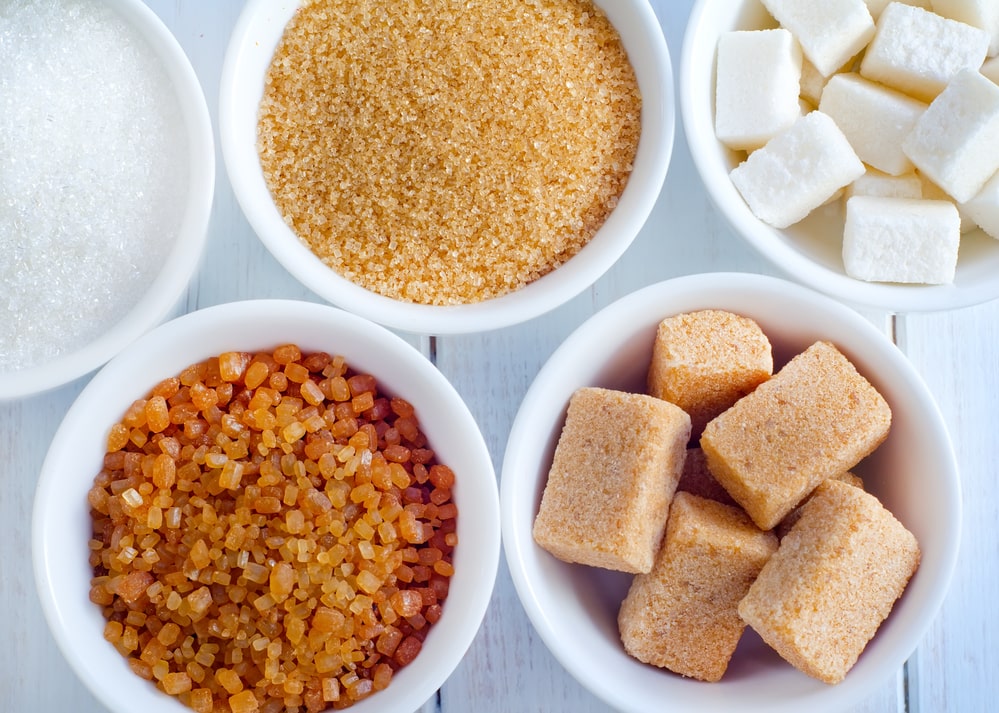
If you didn’t know already, cane sugar is processed into fine powder by adding cow bone char – what a weird thing!
This just seems so strange to me so let’s look a little deeper as to why sugar companies choose to add bone char in the refining process of cane sugar.
Bone char is added to sugar in the refining process to get the ‘desirable’ snow-white look to the finished product. I don’t know who determined these rules, but I like brown sugar just as much as I do white sugar – what was wrong with the tan or brown sugar?
Well, despite my liking the sugar used on sour patch kids is obviously fine in texture and white in color – it’s likely that sour patch kids used bone char filled cane sugar on their candy.
Once again it’s not specified whether or not the sugar used on sour patch kids has been refined with bone char.
Bone char is known as the worlds natural carbon and you aren’t getting away from it if you choose to eat brown sugar
You might think you’re getting away from the use of bone char in your sugar if you choose to eat brown sugar(I sure did) – not so fast – brown sugar also has bone char added in before the molasses is added that turns it brown in color.
Bone char is known as the world’s natural carbon, thus making it essential to most sugar companies in the refining process whether the sugar will be white, brown, or powdered in the end.
Since brown sugar comes from adding molasses to already refined sugar, bone char was added in the initial stages of making brown sugar.
How Do You Stay Away From Bone Char As An Ingredient In Your Sugar?
Figuring out which sugar companies don’t use bone char in their refining process is the first step to ensuring your family isn’t eating non-vegan sugar.
According to Ordinaryvegan.com, they recommend buying your sugar online if you can’t find one of the bone char free companies at your local grocer. If you frequently eat sugar in your household, it might be worth making the change.
Any of the following companies provide bone char free sugar:
- [amalinkspro_table id=”18922″ new-window=”on” nofollow=”on” addtocart=”off” /]
Another option is to avoid refined sugar completely
Maybe refined sugar and trying to find a suitable sour patch kid version for your vegan family or child seems to be too much, and you’d rather avoid refined sugar as a whole – it’s possible!
Today there are a few sugar options that don’t undergo the refining process at all. Non-refined sugar is a great option for everyone, avoiding refined foods overall is a way to further implement healthy practices in your diet.
Your choices for non-refined sugar are below;
Sucanat sugar is a non-refined option for vegan families
Many people consider sucanat sugar to be a healthier sugar option overall because it contains less sucrose and more natural molasses. Natural molasses has beneficial minerals and trace nutrients such as; iron, potassium, B vitamins, and calcium.
I bet you didn’t know all of the beneficial nutrients could get directly from your sugar. Sucanat is something that many vegans love to use in their food and candy, because it doesn’t have bone char in it.
The process to make sucanat sugar is created by crushing sugar cane – extracting the juice – dehydrating it which forms granules out of it.
Sucanat sugar works best in recipes where you’d use brown sugar, so you probably wouldn’t see sour patch kids using it to make their candy. But this is a good option for vegan families in their home cooking, especially since you can find it in most grocery stores.
Your second choice of a less-refined sugar is turbinado sugar
Another crunchier option for non-refined sugar is turbinado sugar, this sugar is also free of being processed with bone char.
Another term for turbinado sugar is ‘raw sugar’ even though it is not technically raw it’s taking on being called raw sugar. If it were fully raw, it would be contaminated with the soil the sugar cane grows in, as well as other impurities.
[amalinkspro type=”showcase” asin=”B0087RVIOU” apilink=”https://www.amazon.com/dp/B0087RVIOU?tag=mominformedcom-20&linkCode=osi&th=1&psc=1″ new-window=”true” addtocart=”false” nofollow=”true” sc-id=”4″ imgs=”LargeImage” link-imgs=”false” specs=”A delicious molasses flavor with distinctive golden hue~~~Kosher and vegan certified~~~Non-GMO Project Verified and gluten-free~~~Perfect for sprinkling over a baked treat or stirring into a beverage~~~Enjoy the sweet moments in life with Sugar In The ” btn-color=”#ff9900″ btn-text=”Buy on Amazon” alignment=”aligncenter” hide-prime=”0″ hide-image=”0″ hide-price=”0″ hide-button=”0″ width=”750″]Sugar in the Raw[/amalinkspro]
Turbinado sugar is cane sugar that has been only partially refined, which is better for you than being completely refined like white sugar is.
Turbinado sugar is cleansed from impurities and then thickened by heating the sugar cane juice, which results in bigger sugar crystals.
You’ll find turbinado sugar in coffee shops nearby, and your local grocer alike. It’s actually a pretty popular sugar, and especially amongst the health-conscious community. The only downfall to turbinado sugar is that it costs 2-3 times more than regular white sugar.
It might seem like sugar companies are having to do more with white sugar and charging less for it – but that isn’t the case – turbinado sugar has a boiling step that takes the place of what white sugar would normally undergo.
If you choose to use turbinado sugar in your household you should know that it is thicker and crunchier than white sugar, yet it melts pretty well in hot liquids.
That said, it’s used for most general household sweetening purposes and you can top baked goods with it since the large crystals hold up well under high heat. Sprinkle it over baked sweet potatoes or beets for a yummy addition to your dinner.
Turbinado sugar is like white sugar in terms of calories and carbs – yet it offers slightly more trace nutrients like iron and calcium.
You need to know where the coloring agents come from in sour patch kids
When it comes to eating sour patch kids, another aspect that vegans need to worry about is the coloring that’s put into sour patch kids. If the coloring comes from bugs, then it is technically not vegan.
You have to ensure that the coloring in each one of the red, blue, green, and yellow men don’t come from these tiny little bugs called – cochineal bugs. Some coloring in candy has been created by smashing the bodies of these tiny bugs.
View in gallery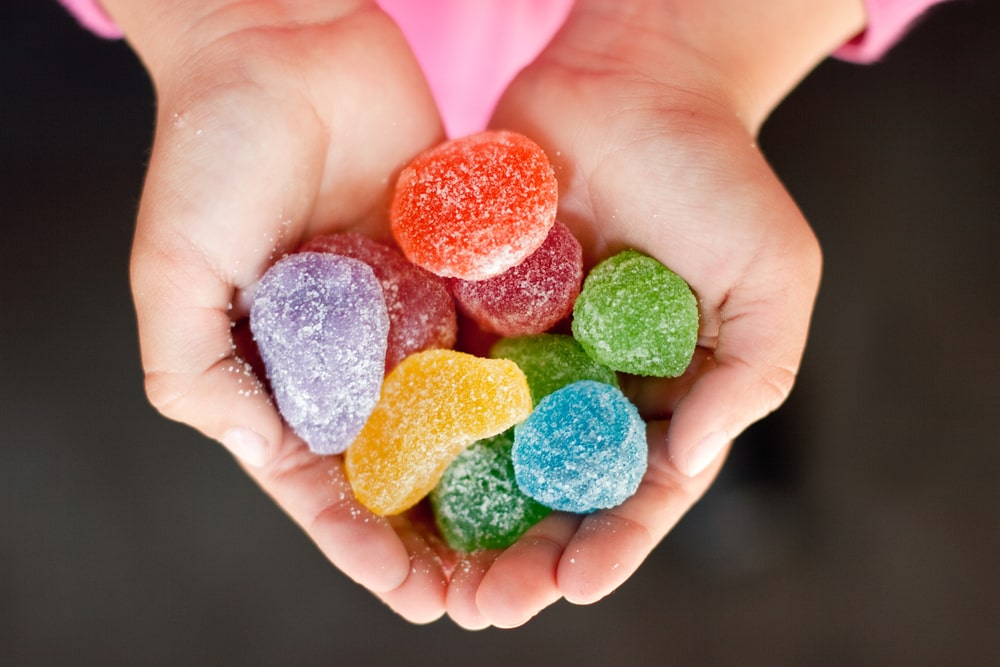
Even though at one point using this dye from cochineal bugs was simply what we did today vegans have a choice to avoid it
It’s true, at some point in history using the dye from these tiny bugs was just what people did. Especially if you lived as an Aztec or the Maya person – roughly 4,000 years ago.
Maya and Aztec people found cochineal bugs to be incredibly useful, I would assume they only used as needed back in the day. They probably even had ceremonial rituals when taking from these bugs to dye their clothing or make face paint.
By the 15th century, the use of cochineal bugs grew rapidly
After a great takeover of 11 cities by Montezuma, cochineal dye became the 2nd biggest form of export in Mexico only 2nd to the export of silver. It seems that this dye was prized right from the start, especially by Montezuma.
So much so, that it was required to pay a yearly tribute made up of 40 bags of cochineal dye and 2,000 cotton blankets that were decorated directly to Montezuma.
The export of cochineal dye only grew from there, spreading to Spain and India, while it was being primarily consumed in Europe by the 17th century.
At some point, the rapid monopoly on cochineal bugs came to an end during this era
After the Mexican War of Independence, the Mexican Monoply on cochineal dye came to an end, thus flourishing into the grand-scale production of the dye in the countries of North Africa, Guatemala, as well as the Canary Islands.
Though it was cultivated among other places it somehow made it’s way into the food in the United States somewhere down the line – where it remains in food coloring today.
The lifecycle of a cochineal bug and how dye from their bodies became desirable
So we know that at some point someone came across a cactus and noticed these teeny-tiny white clusters on the cacti leaves thus finding the cochineal bugs.
Then that person must have smashed them on accident or on purpose revealing their bright red color.
I could see how back then, the indigenous people wouldn’t have known exactly what these bugs look like close up without the proper supplies. So, let’s take a deeper look into how microscopic bugs create large-scale dyes and food coloring.
Cochineal bugs have a soft body and thrive on many species of cacti, they hide well with their flat-shaped oval bodies. Gathering in big white clusters(the juveniles at least) the males are least often observed since they only stay around for reproduction purposes.
The female cochineal bugs will gather in clusters until they have their babies, called nymphs. Later on, when the nymphs have reached the ‘crawling’ stage they’ll crawl to the outside of the cactus and let the wind sweep them away to the next host.
Which food coloring is cochineal bug dye used in?
View in gallery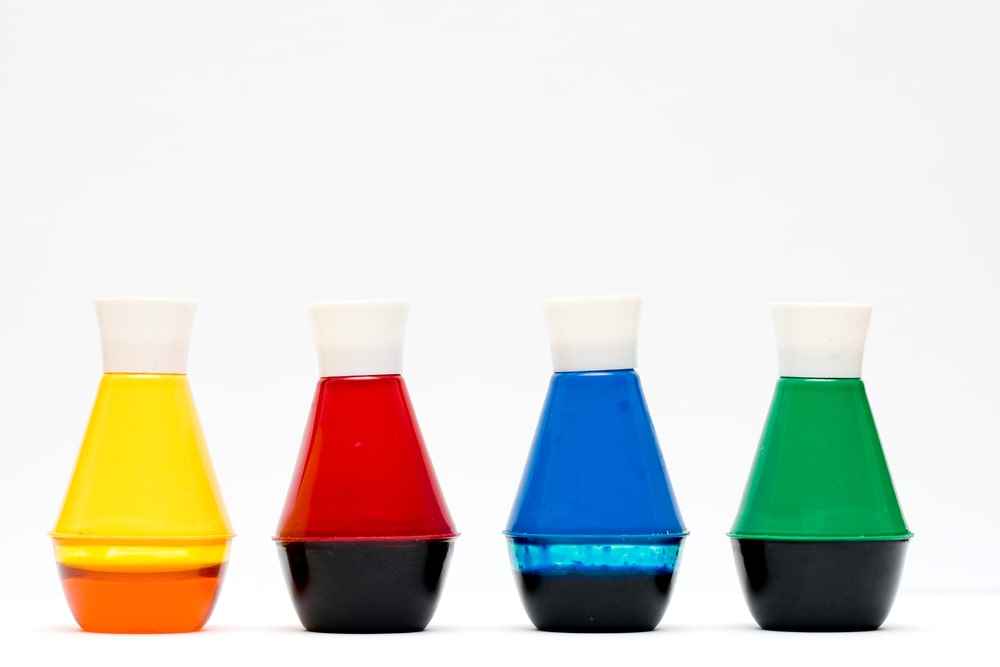
You’ll probably find this red dye from cochineal bugs under the name of Carmin in your candy. If you notice this ingredient in any of the candy you’ve been eating, while trying to be vegan is not in fact vegan.
There is a new policy that manufacturers will have to state this ingredient is in their candy for the people who care about where the ingredients in their candy are sourced from.
Be sure to check the back of your candy for the ingredient label and do further research on any ingredient you don’t understand.
A lot of the time the labels of ingredients have been altered from what the ingredient truly contains, so don’t feel bad if you don’t understand what the label reads.
The good thing is that you can find most information on the internet, so it just takes a bit of diligent research to figure out what’s in your food. It’s important to do so when you’re aiming for a truly vegan diet.
There are regional differences that change the ingredients in sour patch kids that are worth knowing
Depending on what region you’re in, different ingredients might vary. This is because manufacturers source the most qualitative and cost-efficient ingredients in the area to make their candy.
One sour patch kid company in the United States might choose completely different ingredients in comparison to a company in Europe.
This happens with all kinds of products, so, be sure to check out which ingredients are used in the products you have on hand.
This is most notable for the ingredient called gelatin – in some countries, gelatin isn’t listed at all as an ingredient for sour patch kids.
The concerning part about the sour patch kids in these countries is that no alternative gelling agent is listed in the ingredients – so how did they make them chewy?
The regulations of what needs to be listed in the ingredients changes with each region too. Being mindful of doing your research before consuming the product is important.
Thankfully, companies are now starting to advertise whether their candies are vegan or not – as they are catching onto the growing demand for vegan candy.
There are tons of vegan-friendly candy choices and there are even some that resemble sour patch kids
Now that you or your children are being raised on a vegan diet, or perhaps your child needs to be on a vegan diet for health concerns – it’s your job to scout out the other options in the candy world.
You and your family don’t have to miss out on your favorite candy because you’ve decided to eliminate animal products from your diet. In fact, a lot of the time the vegan alternatives are just as delicious or more delicious.
I have to admit, every time I’ve had vegan candy it blows my mind how good it is. I am certainly a vegan candy advocate.
It’s just better in my opinion, whether that’s the mindset that I am ‘eating something better for me’ or it really does taste better it’s so much better.
Top-selling candy this year and their alternative vegan choices
Let’s go over the most common types of candy people eat and then I’ll point you to some reputable companies that provide vegan candy to loyal customers.
The best part about eating vegan candy is that it leaves you feeling good mentally and physically – I tend to have more energy after eating vegan candy and just end up with a stomach ache after non-vegan candy.
At this point in my life, I will always choose vegan candy over non-vegan especially because it’s made out of quality ingredients. As vegan candy becomes more popular it becomes a lot less expensive too.
Chocolate is probably the most common form of candy consumed
View in gallery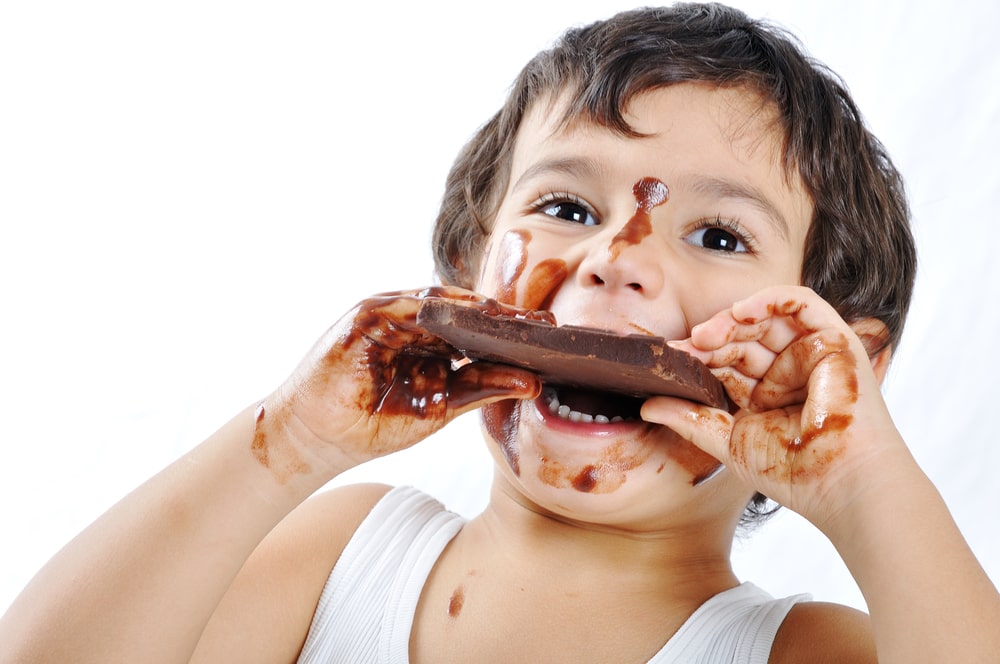
I know this is going to sound crazy, but the amount of chocolate per year is roughly 2.8 billion pounds across the United States alone.
That is approximately 11 pounds per person each year – think about how much you’ve bought in the past few weeks.
Most chocolate lovers try to make a candy bar last a few days – that can quickly add up over a year. Chocolate doesn’t have to make you feel so guilty when you consume it.
In fact, cacao can actually be really healthy for you. Cacao is made from the cacao tree, and before all of the sugar is made it has loads of nutrients, minerals, and vitamins in the bean – iron, phosphorus, and even magnesium are all inside of the original cacao bean.
When does cacao become less healthy in the chocolate manufacturing process?
These large oval pods called cacao beans are originally grown in the deep tropical regions of Mesoamerica. The evergreen tree in the Malvacea species fruits large cacao beans yearly.
The large beans are actually quite good for you, at first, and the white fleshy pulp that’s inside the cacao bean can be eaten by itself but will also taste good if you eat it along with the bean.
Yet, by the time it reaches us during our weekly grocery store run it’s shapeshifted into a chocolate bar like snickers, your favorite chocolate cake, or some chocolate chips that you’ll use for cookies.
So what happens to the cacao bean after it’s picked from the tree, and before it reaches your mouth that makes it much less healthy?
It’s through the process of becoming a chocolate bar that it becomes less healthy for you
The cacao bean or tree isn’t a culprit of bad health. It’s what happens to the harvested cacao once it reaches the candy manufacturer that makes it less favorable toward good health – if you’re aiming to eat healthily and of course, eat vegan.
View in gallery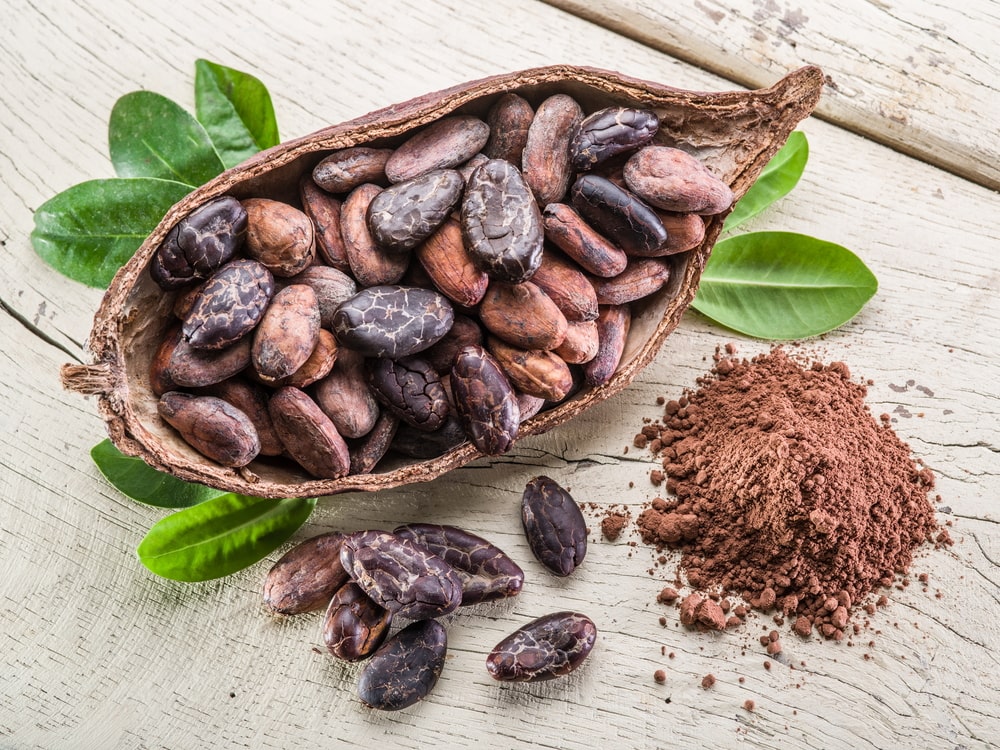
First, the beans are fermented and dried but before they enter the manufacturing facility the beans must be inspected for proper quality
After the cacao beans have been plucked from the tree, and fermented. They are shipped to the chocolate manufacturer to undergo a quality control inspection.
This inspection is vigilant to not approve any cacao beans outside of the quality of beans the company is willing to purchase for their candy products.
Once the inspection for the beans have passed the test the beans are sorted and roasted
After the beans have passed the quality test, next they are roasted, dried, and sorted. During the roasting phase, the cacao beans will begin to release an aroma much like the chocolate you have eaten before.
Yet, it is only after the roasting that the cacao beans will truly have a rich chocolate delicious scent to it. At this point it still remains vegan technically since it hasn’t been combined with any non-vegan ingredients…so why not leave it at this pure chocolate stage? \
If they did that, the chocolate would be so rich and bitter to taste that not many people would find it desirable to consume.
The roasting process does a few beneficial thing’s to help produce chocolate at a large-scale
Cacao nibs have an outer shell that is difficult to remove without the help of heat, thus the nibs will undergo rapid heating before being deeply roasted.
This rapid heating session helps remove the outer shell and prepares it for the winnowing phase of the chocolate process.
The roasting process also gives the cacao nibs the dark brown flavor that chocolate has too. Without roasting the cacao nibs they would be white, like how they are when they come off of the tree.
Winnowing is the next phase of making chocolate and will completely remove the outer shells of the bean
After the beans have roasted, they are then put through a process called winnowing – which is really a fancy word for fanned.
Winnowing is when the beans are sat under heavy fans that blow away the outer shells, while leaving behind the inner cacao nib. These special darkened nibs are what give us delicious chocolate in the end.
View in galleryView in gallery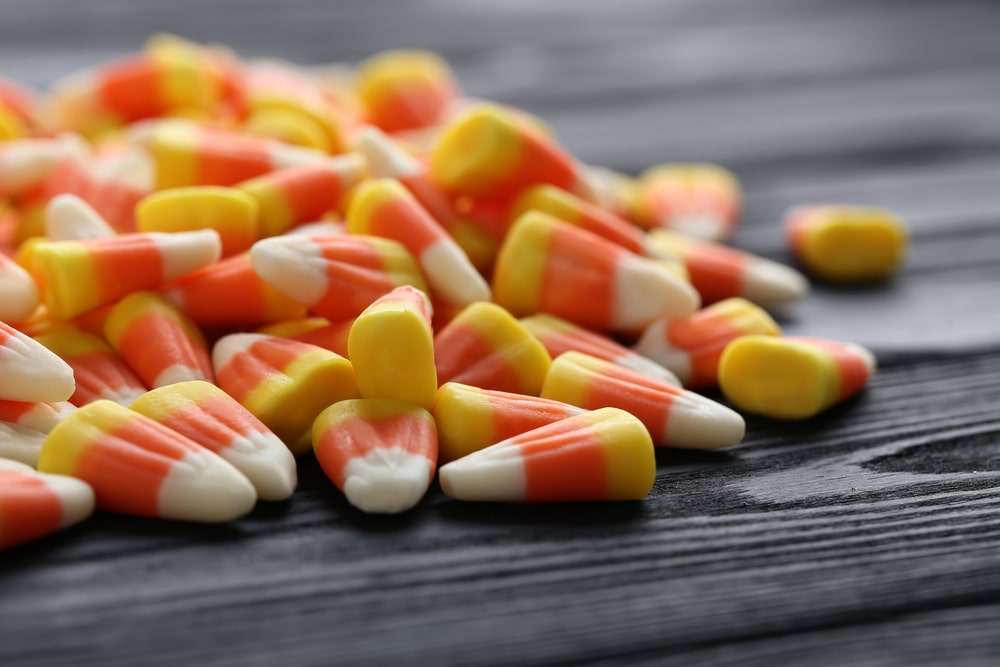
After the winnowing process is complete, the cacao nibs will be ground and pressed to create cacao liquor
I know what you’re thinking, that cacoa liquor must be alcoholic right? Well, it’s not alcoholic, it just comes out of the grinder as a liquid so it’s called cocoa liquor.
This is also the point that the name this product is called changes from cacao(the tree and non-roasted bean) to the roasted product that produces the chocolate bars that you know of.
The cacao is packed with over 300 nutrients and is known as the heart and gold of the cacao bean. Once the beans have reached this stage, they are now ready to be sold in this form to other companies or made into your very own chocolate product.
This step is what decides if the chocolate candy will remain vegan or turn into a non-vegan candy
Now that the cacao bean has undergone such a rigorous process of manufacturing to become chocolate, it is now decided by each individual company if it will remain vegan or not.
There are many company’s that produce dark chocolate which is indeed vegan, but most of the chocolate candy products are not vegan because milk is added to the chocolate or filling to become a milk chocolate candy.
The popular candy bars below are not vegan:
- Reeses
- M&M’s
- Hershey Bars
Many people love candy corn during the holidays like Halloween but it is not vegan
View in galleryView in gallery
Candy corn is not just made out of corn, it actually has several ingredients inside. Even though many people would assume they’re animal product-free, they aren’t.
Candy corn was first created back in the 1800s… so while your make your diet changes to vegan be sure to say well wishes to your long-lived candy corn.
A candy enthusiast named George Renninger invented candy corn long ago not knowing they would become a legend over time.
In the 1800s, I highly doubt that people were debating over which products were animal product free or not – that seems to be a more recent luxury of today’s world.
Candy corn is made up of 12 ingredients, a few of which are openly sourced from animal products. The gelatin to thicken the candy is made from animal bones and parts, and the red dye as well.
Unfortunately, this marks candy corn off of the vegan-friendly list of popular candy.
Let’s go over the sweet and chewy candies ingredients next
The last most popular group of candy is the sweet and chewy candies…from skittles to tootsie pops. Surely you have consumed these candies a time or two in your life, but your child/ren don’t have to. Or, won’t have to anymore if they aren’t vegan of course.
Since this article is about vegan candy, I figured I would clear the air about other candies that are just as popular as sour patch kids for families moving toward a vegan diet.
The chewy and sweet candy on our list are skittles, tootsie pops, and starbursts. It would seem with all of the colors(dye) that they surely wouldn’t be vegan. Are they?
Skittles
Ah, here is one colorful candy on our list that is %100 vegan by definition. These bright chewy candies are made up of plant-based ingredients. Even the dyes are sourced from plant-based ingredients, surprisingly.
Though, if you’re aiming for a healthy diet for your family be wary of the artificial flavors, and sugar in skittles you can certainly find truly vegan or an organic version of skittles. I’ll list a good alternative that I love below.
[amalinkspro type=”showcase” asin=”B00R9DHXYC” apilink=”https://www.amazon.com/dp/B00R9DHXYC?tag=mominformedcom-20&linkCode=osi&th=1&psc=1″ new-window=”true” addtocart=”false” nofollow=”true” sc-id=”4″ imgs=”LargeImage” link-imgs=”false” specs=”Contains one (1) 54-ounce party size bag of SKITTLES Original Fruity Candy~~~TASTE THE RAINBOW: The SKITTLES rainbow, that is. These assorted fruit-flavored, bite-sized candies are one of the all-time candy greats. Deliciously chewy, youll love the green apple, grape, lemon, orange and strawberry flavored packets of deliciousness~~~PERFECT FOR PARTIES: SKITTLES Candies are fruity and delicious, sure, but theyre also a great addition to parties. Use them in decorations for Christmas, birthdays, weddings, anniversaries, graduation parties, and holiday get together” btn-color=”#ff9900″ btn-text=”Buy on Amazon” alignment=”aligncenter” hide-prime=”0″ hide-image=”0″ hide-price=”0″ hide-button=”0″ width=”750″]SKITTLES Original Fruity Candy 54-Ounce Party Size Bag[/amalinkspro]
Tootsie Pops
Tootsie pops or tootsie rolls are some children’s first truly favorite candy – I recall buying my first tootsie roll at the corner market after school in 1st grade. They’re a classic so-to-speak, but, are they vegan?
They aren’t vegan because they contain skim milk, milk fat, and whey. That might be how they’ve gotten so creamy and delicious. Along with milk-fat, you’ll want to avoid eating tootsie pops once you’ve become vegan because they contain artificial colorings like red 40, Blue 1, and Yellow 5.
These coloring formulas can wreak havoc on the body, especially a child’s growing body.
What is whey?
Since so many candy products(chocolate candy mostly) contain whey, let’s discuss further what exactly it is. Whey is derived from milk, and it’s added into ingredients to make the texture feel better on your tongue.
Though some people will argue whey is healthy and added to foods for nutritional context – it is far from vegan. Cow milk is meant for cows, and whey is derived from cow’s milk. A human body has a harder time breaking down cow’s milk in general.
Starbursts
[amalinkspro type=”showcase” asin=”B07WLKCH4P” apilink=”https://www.amazon.com/dp/B07WLKCH4P?tag=mominformedcom-20&linkCode=osi&th=1&psc=1″ new-window=”true” addtocart=”false” nofollow=”true” sc-id=”4″ imgs=”LargeImage” link-imgs=”false” specs=”Contains one (1) 54-ounce party size jar of STARBURST Original Fruit Chews featuring Strawberry, Cherry, Lemon and Orange flavor candies~~~FRUITY BURST OF FLAVOR: STARBURST Unexplainably Juicy Fruit Chews deliver a chewy burst of fruit flavor in every fruity chew. These full size pouches pack a full size fruity flavor for a delicious punch of orange, strawberry, cherry, or lemon” btn-color=”#ff9900″ btn-text=”Buy on Amazon” alignment=”aligncenter” hide-prime=”0″ hide-image=”0″ hide-price=”0″ hide-button=”0″ width=”750″]Starburst Mars Candy Original Fruit Chew[/amalinkspro]
The brand of chewy candy named starbursts is not vegan…well they might be…but let’s just avoid them just in case they aren’t actually vegan. The ingredients that cause the question of whether starbursts are vegan or not are the artificial flavors.
Even though starbursts technically don’t have any non-vegan ingredients in them, artificial flavors can be derived from plant or animal sources. Since it isn’t clearly stated if this sweet chewy candy is truly vegan or not, find a vegan option to enjoy instead.
Since there are so many companies that have made candy that mimics starbursts – there is no reason to dig into a bag of questionable starburst instead of just finding a version of chewy square candy that ensures it is vegan.
Finding a vegan choice of your favorite candy is supposed to be fun
Don’t get frustrated over trying to find your favorite vegan candy, there are endless options in today’s market. If you would’ve been looking a few years ago, it might not have been so easy to find vegan options of the candy you know and love.
Below are some of the most popular vegan candy on the market:
Lovely vegan organic chewy candies can replace your starburst
When you try these truly lovely chewy candies, your mind might be blown away. Trust me, they’re tangy and sweet – the perfect combination of flavor too.
Being sold in a 5.oz bag you will get your money’s worth when buying from this generous company.
Get ready to enjoy the flavors – lemon, cherry, and strawberry when you open a package of these consciously created organic candies.
To be certified organic companies have to go through a rigorous process, ensuring they have done their best to use ingredients that don’t contain non-organic additives.
Lovely Vegan has kept the environment and your family’s health in mind when making these bright chewy candies for you.
Tree hugger bubble gum suckers are a great alternative for a vegan sucker
You’d think I was joking if I told you how yummy these bubble gum-centered suckers are vegan, nut-free, GMO-free, soy and dairy-free, and have no corn syrup in the ingredients.
These suckers are truly for those who care about what their children eat. Tree huggers made these so that families who eat a vegan diet won’t have to worry about taking away all of their children’s treats with the choice to transition to a vegan diet.
This is especially great so that your child who doesn’t eat animal products can feel included on Halloween – pass these out to friends who knock on your door this year! The flavors are packed with flavor sour apple, cherry, pineapple, and grape.
Smart sweets sour blast buddies are just as satisfying as sour patch kids
We wrote this entire article to answer the question of whether sour patch are vegan or not – even though they’re said to be, they probably aren’t when you dive deeper into the ‘hidden’ ingredients.
One sure way to give your kids a sour-sweet chewy candy that is truly vegan is to give them sour blast buddies instead. Which are truly sour and sweet and full of goodness.
When I tried these I was surprised how good they are – they certainly satisfied my sour patch kids craving.
Another nice part about these candies is that they only contain 3grams of sugar per serving. These are especially good for children with sensitive teeth.
A plant-based treat that will satisfy your sour-sweet tooth too! I love that vegan candy companies are becoming so popular, candy for your children doesn’t have to feel so bad now.
Do I have to be vegan to eat vegan candy?
The nice thing about vegan candy is how good and fulfilling it is to non-vegan eaters too. Vegan candy is just as good, if not better than non-vegan candy.
Plus, it’s truly better for you than regular candy(which contains a lot of sugar and dyes), vegan candy is colored with real fruits and vegetables.
You don’t have to be committed to a vegan diet to enjoy vegan candy – try it out the next time you’re at your local grocery store.
View in gallery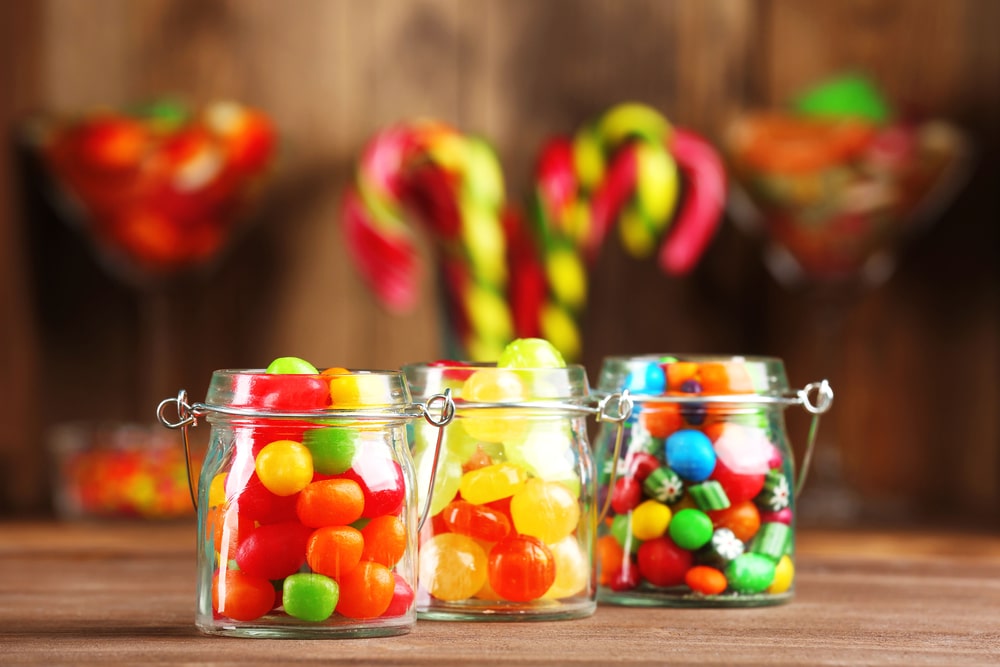
Is it worth it to pay more for vegan candy?
Vegan candy doesn’t have to cost more if you find it at the right store, online, or at a brick-and-mortar store it can be an inexpensive healthy choice of candy.
If you are committed to a vegan diet, you’ll want to branch out and make the diet changes necessary to maintain a vegan diet. Some vegans will be less strict than others and have leniency when it comes to hidden ingredients, but my take is that if we’re vegan getting clear on what is truly vegan is the way to go.
You might be disappointed if you were to find out later on that certain candies aren’t vegan, always reach for certified vegan candy. In short, yes, it is always worth it to ensure the food you’re eating is vegan.
If you or your child has a certain dietary requirement, where vegan food is required it is even more important to buy vegan options regardless of the price.
In Conclusion
Transitioning to vegan candy companies far outweighs the benefits that you’ll receive upon doing so. Your health, lifestyle, and positive improvements mean more than anything else in your life – I get it.
Thankfully, vegan candy options come in abundance in the food industry, and you can have them shipped to you regardless of the region you live in. Staying true to your vegan diet is something you have to commit to by utilizing all of your resources.
Try out the vegan candy available to you, and your family to decide which ones fit your taste. Even if you aren’t vegan, and you’re just looking to have a more healthful diet in place – vegan candy is a wonderful option.
Sources
Are Sour Patch Kids Vegan? – Vegan Friendly
What Is Turbinado Sugar? Nutrition, Uses, and Substitutes – Healthline






